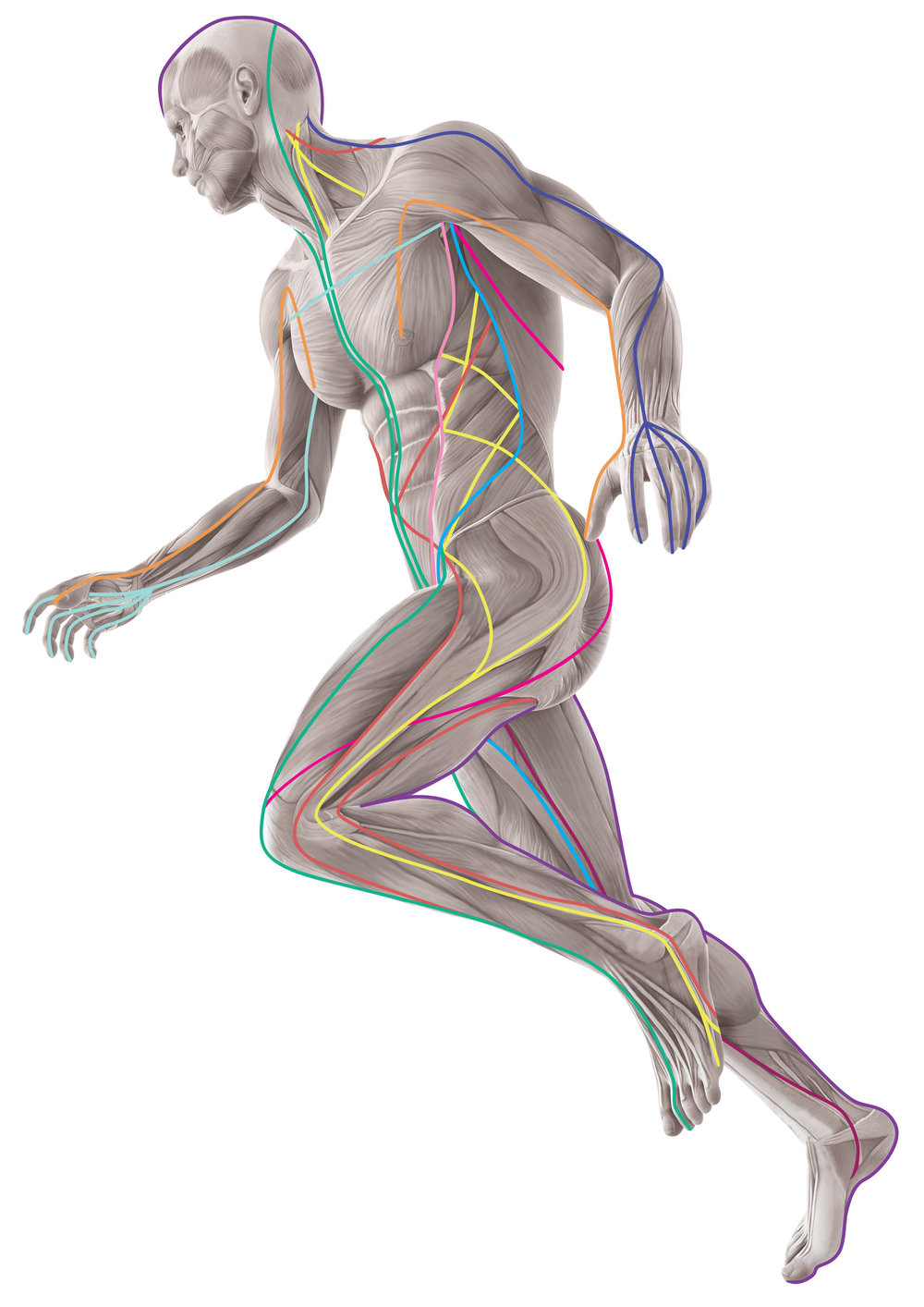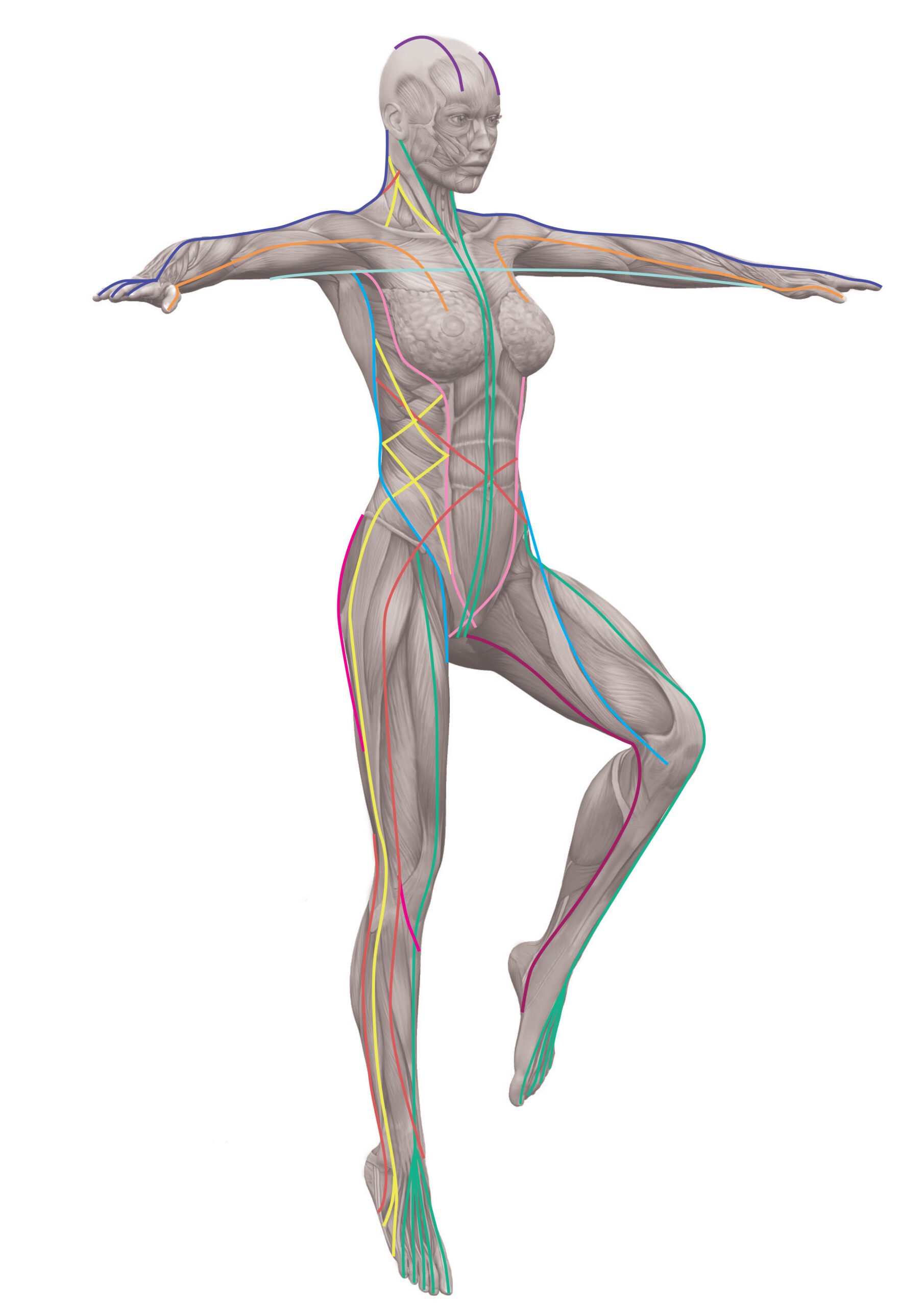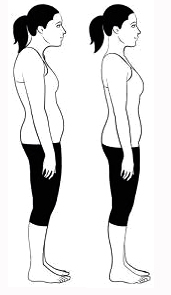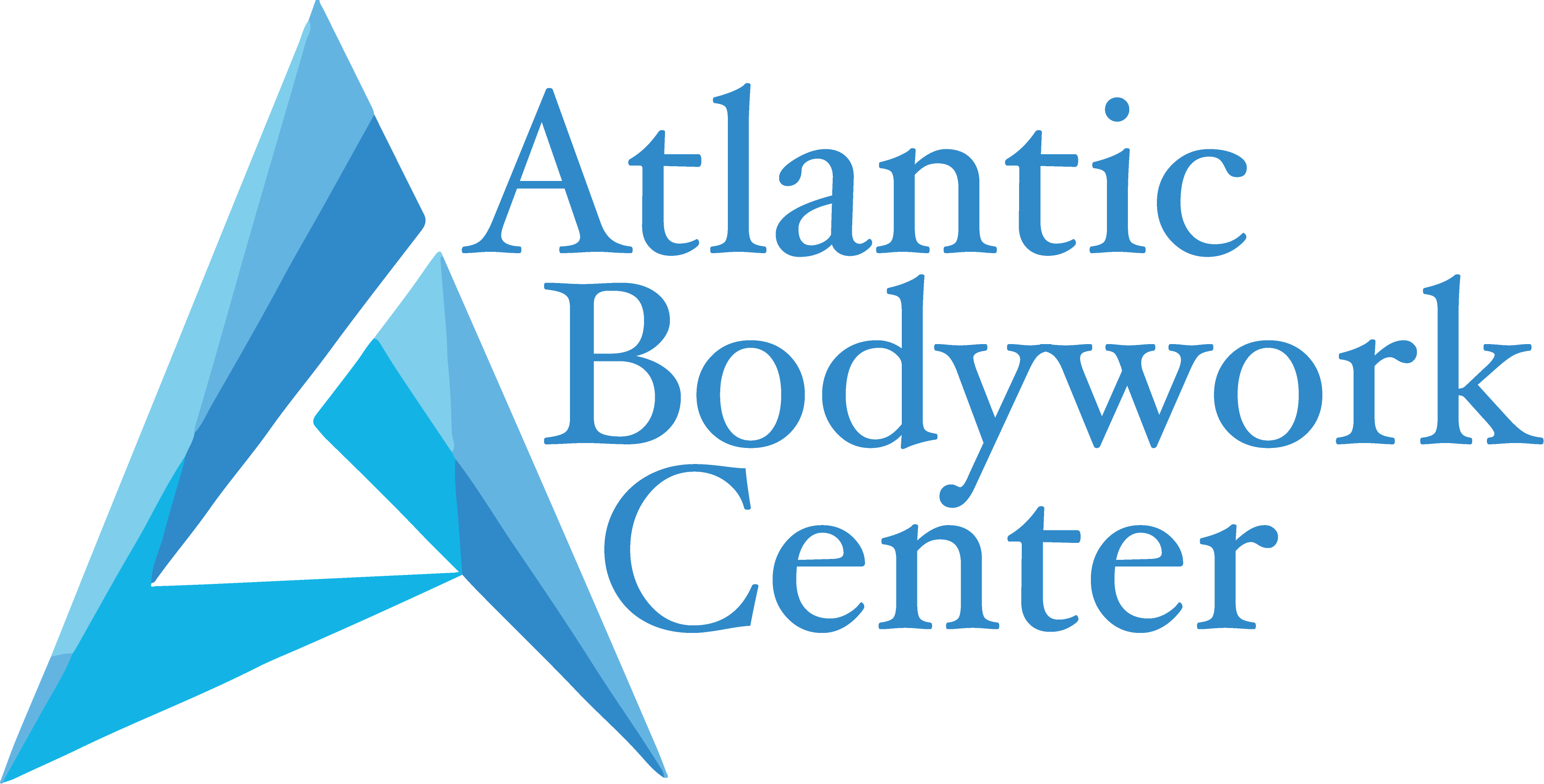ANATOMY TRAINS STRUCTURAL INTEGRATION (ATSI )
ATSI is a hands-on bodywork method of reorganizing the body, but it is first of all a theory of movement. Reorganizing means knowing the body’s full potential for movement. Compensation begets compensation, and more symptoms. ATSI’s goal is to unwind this process and reduce structural stress. The method depends on a unique property of the body’s connective tissue network. Especially for chronic and long-held patterns, it is not enough to release the muscular holding, though that is definitely a good start. Freeing and repositioning the fascial fabric, along with re-integrating the movement patterns so that they stay easily in their proper positioning, is the job of ATSI. In this sense, ATSI could be seen as a companion to osteopathic or chiropractic care, but instead of thrusting the bones back into place, we adjust the fascial ‘guy-wires’ so that they stay in place – the new alignment simply becomes part of who you are, not something you have to work at or repeatedly see a practitioner to maintain.
Structural Integration (SI) is a process-based approach to somatic education, typically involving manual therapy, that explores the possibility of change in how you use and experience your body. Through education, awareness, and therapeutic touch, you can release painful, stressful patterns of tension. Effortful habits are replaced with feelings of comfort, ease of movement and posture, and a sense of whole-body coherence.
SI systematically addresses your body as a whole, usually over a series of sessions. Skillful touch brings relief from pain and discomfort, and awareness of how you’re holding and using your body. As your practitioner helps you inquire into how you relate with your body and environment, you may come to recognize patterns of tension that no longer serve you, and discover new options for movement, posture, self-care, and your overall physical experience. Rather than treating symptoms, SI practitioners work to help your body integrate internally between systems, and externally toward your life’s challenges.
Structural Integration can help us learn to “let go” of chronic stress and tension, to stop fighting gravity and allow it to support us instead. Movement becomes a pleasure, breath comes easier, and “good posture” becomes effortless. We experience a sense of ease, efficiency, and grace. Many SI clients come to find relief from pain and discomfort along the way. While this describes some general benefits, the SI process is individual and personal, with a wide range of effects and benefits.
ATSI brings the locomotor and sensory systems of human being to a new level of integrated function. The ATSI approach can be used to correct postural misalignment, ease myofascial pain and restrictions, improve movement , resolve somato-emotional difficulties, or evolve a more allied and complete body image. The ultimate goal, however, is “integration”. Some of our favorite defining hallmarks for the term include:
-
Structural Alignment
-
A unity of intent in body movement
-
Physiological Harmony
-
A refined balance between stability and receptibility
-
Efficient coordination of sensory information and motor impulse
-
Palintonic awareness




Whether you sit at a desk all day, are a seasoned athlete, or are beginning to feel the signs of aging, compromised connective tissue can affect anyone. The fascia can tighten, shorten, and thicken due to a number of reasons including:
- Stress
- History of physical injury
- Work-related issues
- Repetitive movements
- Poor posture
- Natural effects of aging
- Prolonged athletic performance

